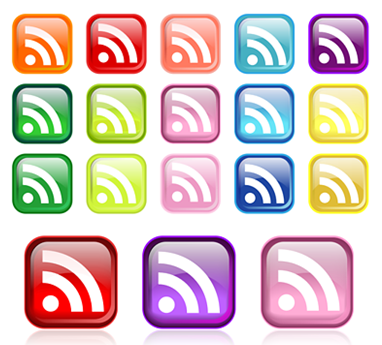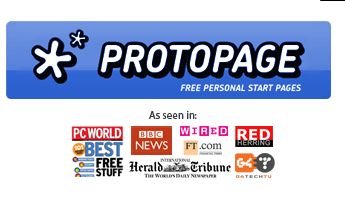E-learning concepts - Table of Content
Web 2.0
RSS
 Learning Objective
Learning Objective
When you have completed this session, you should:
- understand the significance of RSS in content sharing,
- be able to identify the concepts of news channel, feed reader and feed aggregate,
- be able to apply "widgets" in practice,
- be able to apply RSS for publishing your blog.
 Reading
Reading
The easiest way of following news and new information appearing on the Internet is to visit our favorite pages from time to time and to browse the different subjects.
 |
 |
| Searching for news on web 1.0 | Getting news on web 2.0 |
As the number of interesting pages increases so does the time needed to visit them. Navigating your collection of links becomes more and more difficult, even though browsers provide "Favorites" and "Previous" functions. Visits can be a waste of time if no changes have happened on a given page. Business portals try to keep subscribers up to date by sending out regular newsletters in e-mails (weekly or monthly). This can be a useful way of keeping up with news, but some postboxs can be swamped with the scale of content.
Content "broadcasting" on Web 2.0
 One of the most important features of Web 2.0 is that it has revolutionised - through the technology - how content has become accessible. One area, in particular, is how people are automatically informed about news and newly published contents, but without having to search for this. The first news collecting/news sharing software (around 2004) was only used by big news agencies, like Reuters, but as the amount of content published by the net using public (e.g. blogs) increased rapidly the need and use for these applications grew too.
One of the most important features of Web 2.0 is that it has revolutionised - through the technology - how content has become accessible. One area, in particular, is how people are automatically informed about news and newly published contents, but without having to search for this. The first news collecting/news sharing software (around 2004) was only used by big news agencies, like Reuters, but as the amount of content published by the net using public (e.g. blogs) increased rapidly the need and use for these applications grew too.
News channels
RSS (Really Simple Syndication) is at the heart of these new news channels. It is found on many community pages, such as on YouTube with its news channels, and thematic video collections.
On Youtube, software installed on the portal (on server side) - the RSS feeder - constantly "monitors" and extracts videos loaded up on the particular channel and peridically transmits them to users registered with the news channel. On the user side there is a "client" program - an "aggregate" - which displays the "news" being fed from the server. Users see a brief extract of newest contents, with links, and can decide whether to watch a new video (or read a new text) or not. This technology turns around the way content is accessed. The user does not visit his/her favorite pages -- the most up to date information is fed to him or her.
RSS standards
Standards are vital in ICT, so it is no surprise to find that there are standard developed specifically for RSS technology. The specific service being used will often be marked with the icon for the standard used. The most popular standards are the various versions of RSS, and Atom. Data transmission requires server and client to "speak the same language", i.e. to use the same standard. Look for an icon that marks when RSS service is provided on a web page. Look for this on sites such as newspapers.
How to use RSS
...in browser?
RSS readers are offered in browsers as a standard option. In Internet Explorer this feature is called "News Channel"; in Firefox it is called "Live Bookmark”. If you are searching on a web page where you have found the RSS icon, click on it. On the resulting page, look for the message: 'subscribe to this news'. Following this, and choose Favorites under the "News Channel" tab, and you can choose the extracts of the most up to date news.
...to follow blog posts?
The RSS service is usually built to work with the bloggers in both direction -- news supply and news collection. Visitors can register for news channels of many public blogs, and blog owners can connect to other blogs to display the extracts of latest news.
... with feed readers
There are programs especially developed for reading news -- Google Reader is one of many. These applications allow you can subscribe to your favorite websites in order to get news automatically.
... to create a personal web page?
Another large group of web 2.0 tools provide options for creating personalized web pages. A basic function of web page editors is to collect RSS news, but they also offer other options to create a personalized working platform for amusement - or for learning. Some of these options include:
- calendar, clock,
- links to web pages where there are no RSS services,
- notes, message editors and displayers,
- calculator,
- reading mail box,
- simple games,
- invitation for aquaitances and friends, etc.
These little options for persoanlisation are called widgets.
Netvibes, iGoogle, Protopage, Pageflake, MyYahoo, Microsoft Live are portals, offering "sharing" services suitable for creating personalized, news-collecting web pages. Here are some examples for use by the Tenegen community, partly for experiementation and familiarisation, and partly for potential use in this course.
For a further example, look on the Tenegen's Netvibes site which uses this technology to collect all the blog posts written in students' learning diaries.
 |
 |
| Tenegens page e-mail: tenegen@prompt.hu password: tenegen555 |
See Tenegen's board! e-mail: tenegen@prompt.hu password: tenegen555 |
... to create your message board?
"Bulletin board" (or message board) applications are different from pages using RSS, but they can have features such as "sticky notes" which have a similar bahaviour. The examples shown below illustrate this.
 |
There are many differences among the options offered by the various applications. Protopage and Netvibes are feed aggregates (they publish news from websites with RSS feaders built in). Padlet does not quite offer this same feature, but it works in a similar manner to RSS feeders in that you can reach the news posted on its walls from other sites. There is an example of this on Tenegen's protopage. |
| http://www.protopage.com/ | See Tenegen's protopage! user: tenegen pasword:tenegen555 |
Tenegen Teachers - on Netvibes
This site offers a content aggregate of your blog posts. If you write your blog outside of Moodle in a blogger, then you can add an RSS feed on the Netvibes site to your own blog. If all participants do the same, then it is possible to follow the latest posts without having to visit each blog one by one!
Tenegen's Protopage
This web 2.0 tool offers the same functionality as Netvibes, but in Tenegen it is used as a message board for the course. The aim was to evaluate the tool across the Tenegen group to determine whether it is suitable as a pedagogical tool for the project.
To have editing right on these sites (Netvibes or Protopage), login with the account given above. To create your own site, obtain an account by registering through the application!
Tenegen's Padlet
Padlet is a very simple message board system. Compared with the two other solutions discussed above, it has the advantage that anybody can post messages on its 'wall', if the owner so allows. It also has options for content aggregation, but it allows the sharing of news posted on the wall with several other applications like Twitter. It also operates as an RSS feeder.
 Exercises
Exercises
1. Visit the Protopage and Padlet sites and try them out. Create a new message on both sites.
2. If you maintainyour learning diary in Blogger (which has an RSS channel), please add a feed to it on the Tenegen's Netvibes site. To add a feed to your blog, use the following steps:
a) After entering the site, choose an existing tab, and click on "add new content", then "New source".
b) Copy the address of your own blog into the RSS field.
If all students complete this exercise then there is a single place to browse all the extracts of Tenegen blog entries ( ).
).
3. Write a post in your learning diary: have you any ideas about how these tools might help with your daily teaching work?